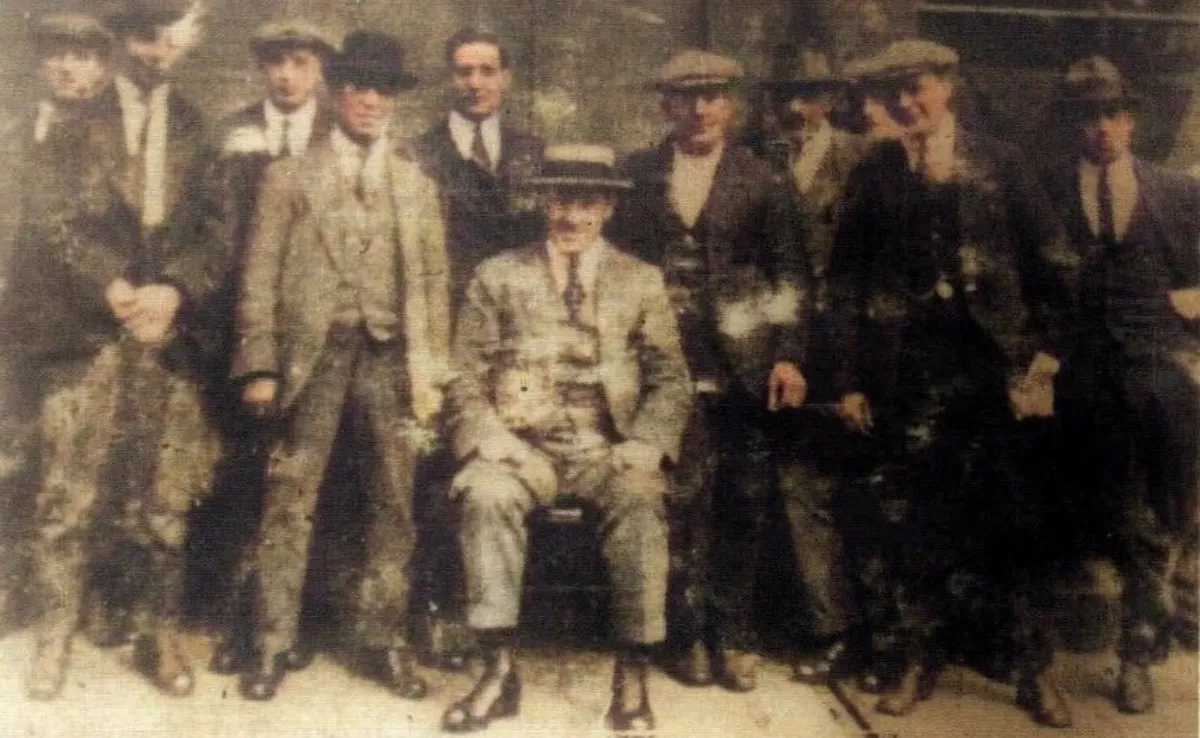 1.
1. Charles Sabini was the illegitimate child of either Italian immigrant Ottavio Sabini from Parma in Italy or Charles Handley, a builders' labourer.

 1.
1. Charles Sabini was the illegitimate child of either Italian immigrant Ottavio Sabini from Parma in Italy or Charles Handley, a builders' labourer.
Charles Sabini's mother was a Scottish woman known as Eliza Handley or Elizabeth.
Charles Sabini attended school at Drury Lane Industrial School, a school designed for neglected children who were considered at risk of delinquency, up until 1900.
Charles Sabini was seen as a promising fighter but was unwilling to train hard so instead he became a bouncer at Sullivan's promotions in Hoxton Baths.
Charles Sabini married Annie Emma Potter, the daughter of William John Potter, at St Paul's in Clerkenwell, on 21 December 1913.
Charles Sabini was a tenor and his favourite song was Rosie Magoola.
Charles Sabini gained a reputation as a hard man during a bar brawl at the Griffin public house in Saffron Hill in 1920, when he knocked out a well-known enforcer for a south London gang who had insulted an Italian barmaid; Charles Sabini became known as a protector for both Italians and women in London.
At its peak, Charles Sabini had extensive police and political connections including judges, politicians and police officials.
Charles Sabini's men provided a variety of "services" to bookies which they did not need, such as tools they already had like chalk and "dots and dashes".
Darby Charles Sabini controlled five or six of what were considered the best pitches at each event and had his men guarding his bookies, who worked on a "ten bob in the pound basis".
In 1929, the Jockey Club and the Bookmakers' Protection Association took measures to prevent Charles Sabini from controlling the best pitches and his other affairs on the racecourses came under attack from the police.
Charles Sabini managed to fend off challenges from rival gangs such as the Cortesi brothers from Saffron Hill, although his businesses were routinely harassed by street gangs such as the Hoxton mob.
Charles Sabini's power rested on an alliance of Italians and Jewish bookmakers.
Charles Sabini was released in 1941, but in 1943 found guilty of receiving stolen goods and sentenced to 3 years in prison.
Charles Sabini routinely wore a flat cap, collarless shirt, high-buttoned waistcoat, and dark suit.
Charles Sabini was said always to carry a loaded pistol, and he did not hesitate to order beatings and razor-slashings of his rivals.
When Charles Sabini died at his home in Old Shoreham Road, Hove, on 4 October 1950, he left little money.